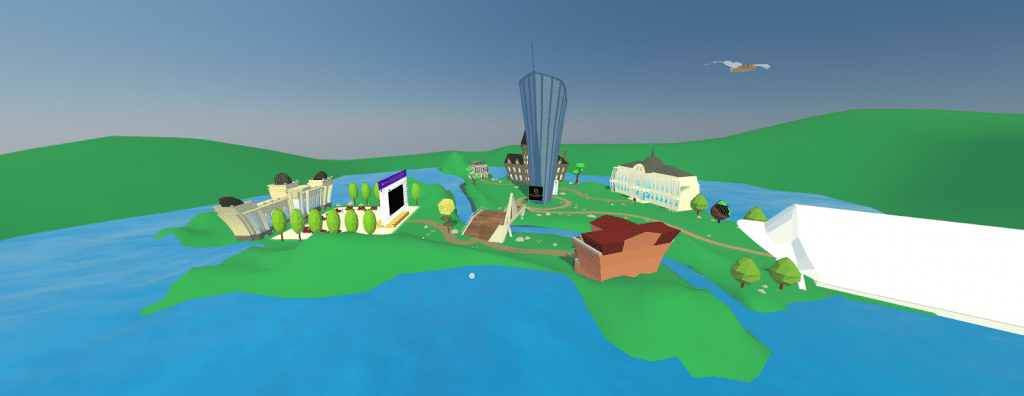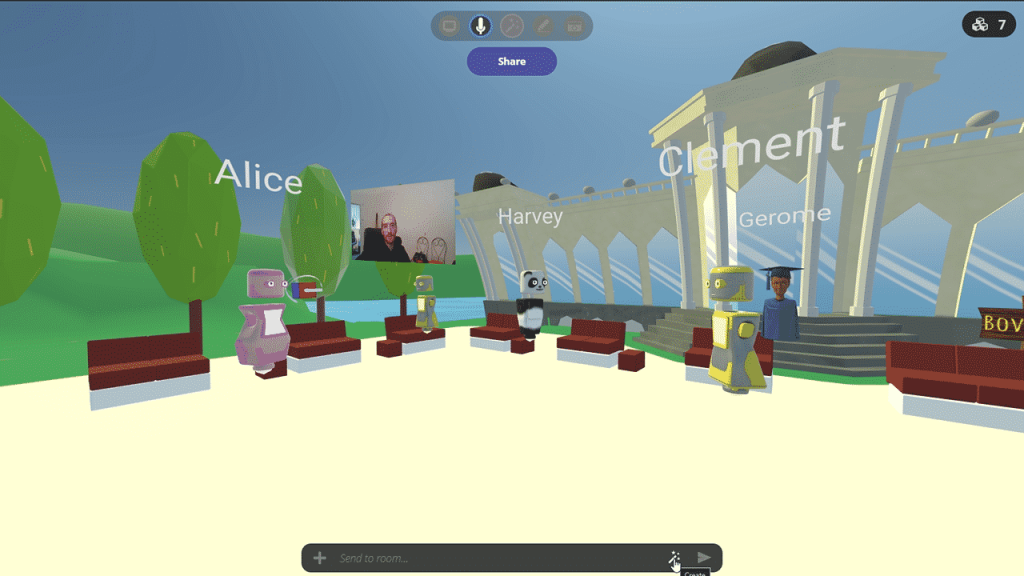The Covid-19 crisis forced billions of people worldwide to stay home. While the consequences on national economies were disastrous, some actors were dramatically more affected than others.
The event and conference sector for example mainly relies on the physical presence of the participants or spectators, and with the recent social distancing restrictions and interdiction of public gatherings this was not possible anymore.
Conference and event organizers’ creativity and resilience quickly lead to a few solutions; online meetings, webinars and live streamings of some events.
But in most of these, the social element was still missing.
Social VR to the rescue
In the beginning of May, Wallifornia MusicTech (MusicTech and e-sport hub from Liège) contacted Poolpio, looking for solutions for their business accelerator and e-sports events.

Poolpio quickly offered a Social VR solution, creating a “cartoonish” environment with a few landmark of the city of Liège where the event takes place (Theatre, Concert Hall, Art Gallery). The start-ups participating in the event would only have to connect with a laptop or a smartphone and they would be able to follow the presentations, lectures and conferences in the different parts of the virtual world.

Wallifornia MusicTech were thrilled about the idea and gave the greenlight on the 21st of May. This meant that Poolpio’s teams delivered the final product in less than three weeks for the first virtual accelerator in June.
Virtual interactions never felt so real
Wandering around the freshly created virtual world, the participants (and Wallifornia) were thrilled about the possibilities Social VR offers.
Participants can talk and listen to each other intuitively using their microphones and speakers, and can form small groups by startup, or by workshop. The further they are from others, the less they hear them. This way, each group gets to discuss their topic and can gather back with the rest for the lectures.The nightmare of collective Zoom, Skype or Hangouts meetings is over.
Panelists are able to share their presentations on giant screens, and each participant can of course also share his/her screen or activate his/her webcam. E-sports players stream their games live from Twitch directly onto giant screens in the virtual world (the virtual world displayed in the video is not the one used for e-sports).
Instead of taking out your smartphone to show a video like you would in real life, you share it directly in the virtual world. And if you want to brag about how cute your cat is, you can as easily share your pictures.
These features allow the users to feel a strong sense of presence. Gathering in group thus makes more sense and feels more real on the social VR platform than in virtual meetings.
Social platform on steroids
Inside the virtual world, you can also take pictures, videos, create and display objects and of course share the room’s content on social media. The main goal remains of course the recreation of social interaction in an original and welcoming way, easily accessible to anyone. However, the game-like designs and the multiple functionalities make the user want to stay and interact with the virtual environment as well as with other users.

While you cannot reasonably expect people to spend all day in a single Zoom meeting, the Social VR platforms provide a relaxing and intuitive experience which allows for longer events. In the context of Wallifornia’s events, different teams working on their projects or meeting with one another will use the Hubs worlds Poolpio created for them to replace physical whole-day events.
The business accelerator is happening during the whole month of June and Wallifornia’s VR Summit, Hackathon and E-sports final will take place in the beginning of July. These events will welcome even more people in more diverse environments and bring the Social VR experience to a whole new level.
